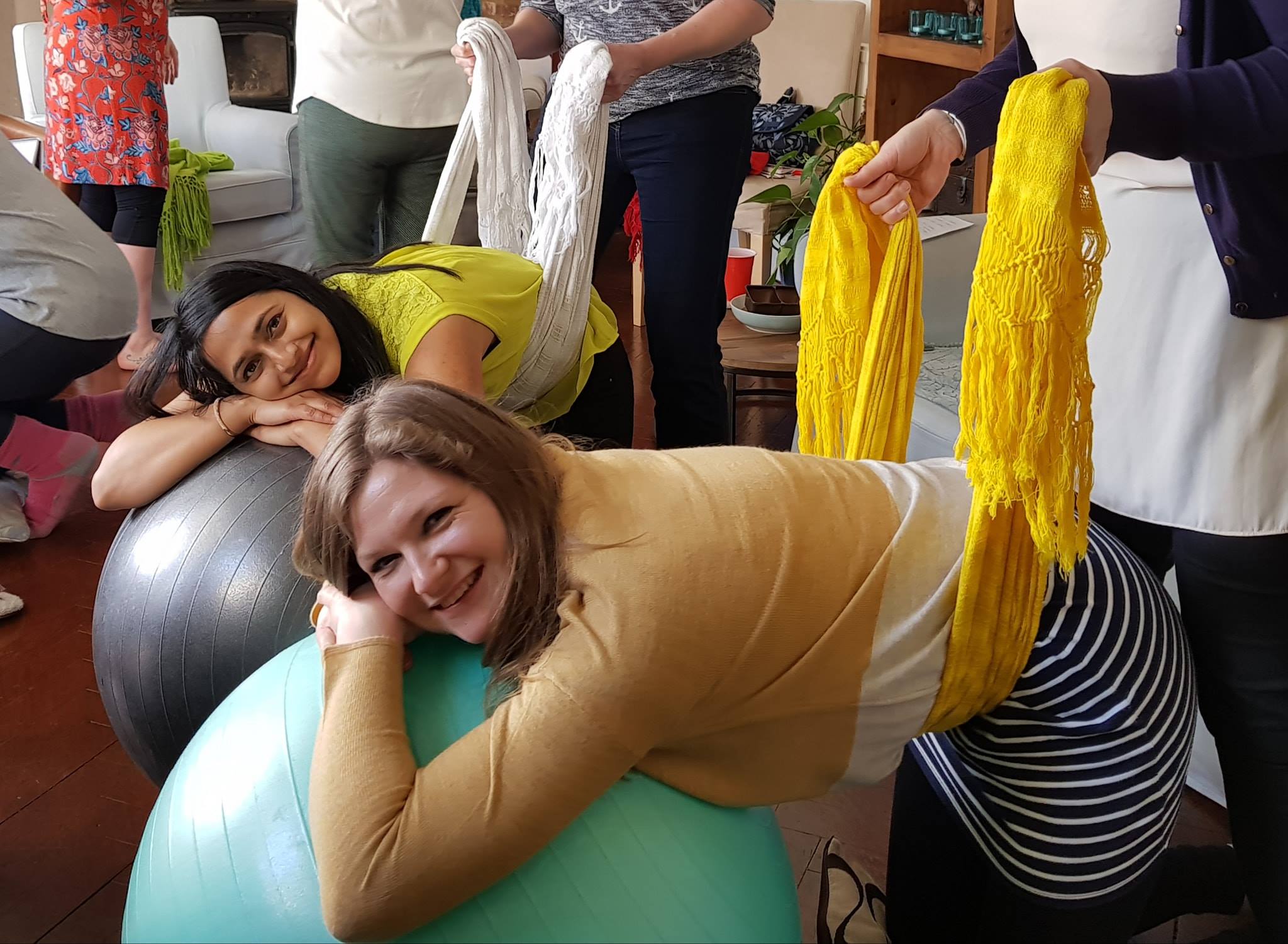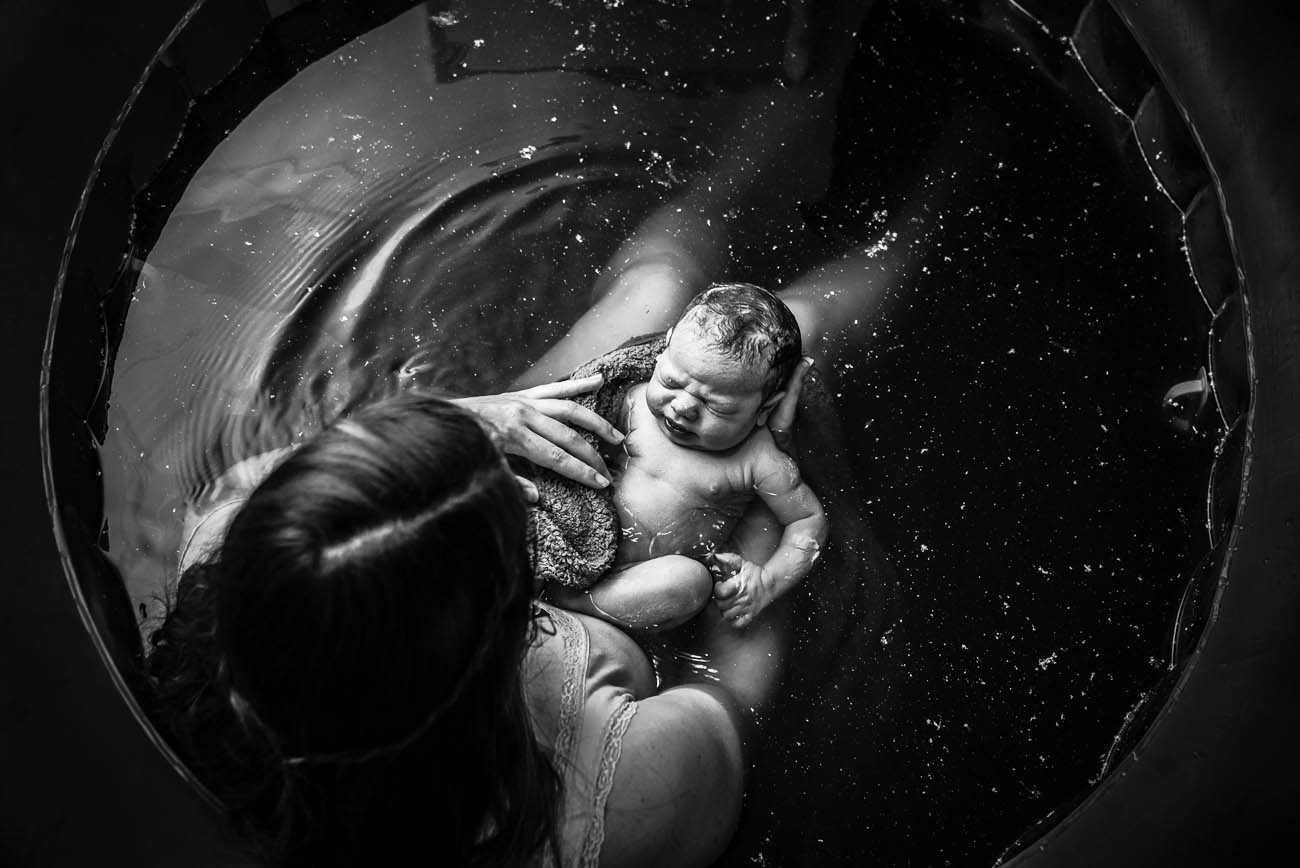Birth Balls are a brilliant way of keeping hips and pelvis flexible and supple thorough pregancy and can really be a help through labour. They can be a "better for birth" substitute for the office chair or the couch and a perfect way of exercising in a small space. Tips on how to use them safey, getting the right size, and simple exercises
 Birth balls are a great way to keep the pelvis moving. It's best used from early pregnancy onwards but it's never too late to start. Using the right size birth ball is important. It also needs to be adequately inflated with knees a few centimetres below or at the very least parallel to the hips. When using it keep feet flat on the floorfor stability and hold on to something until confident with the ball. It's important to buy a good quality, anti burst ball and invest in a good quality pump to make sure the ball is properly inflated and it's important to choose the right sized ball
Birth balls are a great way to keep the pelvis moving. It's best used from early pregnancy onwards but it's never too late to start. Using the right size birth ball is important. It also needs to be adequately inflated with knees a few centimetres below or at the very least parallel to the hips. When using it keep feet flat on the floorfor stability and hold on to something until confident with the ball. It's important to buy a good quality, anti burst ball and invest in a good quality pump to make sure the ball is properly inflated and it's important to choose the right sized ball
A birthing ball is a great way of helping balance and pelvic mobility. If you sit at a desk working from home or in an office, remember to get up and walk around for a few minutes every 30 minutes. Set an alarm to make sure you do this - it is essential. Even better replace the office chair or sofa with a birth ball. It’s almost impossible to slouch when sitting on it! Changing positions and moving is the key so try not to focus too much on using one technique. It can be used to sit on, and while in a sitting position rotate hips in a figure of eight or circles. Alternately lean on it, draping arms and chest over the ball. Use gentle rocking motions - these are comforting and help release pressure and discomfort in hips and back keeping the joint supple and mobile.
 During labour, it's a great benefit in reducing pain and can help bring the baby’s head down onto the cervix. If your baby’s head is high in the pelvis rotating your pelvis 10-20 times to the left then to the right a few times a day is definitely worth trying. Sitting, swaying or rocking back and forth on a ball can make more room in the pelvis. Follow your instincts and use whatever position feels most beneficial or most comfortable. You can use it in the bed or out of the bed. If you’re in the hospital, sit on the ball by the side of the bed and raise the bed to a position where you can comfortably lean on it. Your birth partner can kneel behind you and give a soothing back massage. If you have back pain you can use the ball to apply pressure on your back by placing it on the wall and leaning back into it.
During labour, it's a great benefit in reducing pain and can help bring the baby’s head down onto the cervix. If your baby’s head is high in the pelvis rotating your pelvis 10-20 times to the left then to the right a few times a day is definitely worth trying. Sitting, swaying or rocking back and forth on a ball can make more room in the pelvis. Follow your instincts and use whatever position feels most beneficial or most comfortable. You can use it in the bed or out of the bed. If you’re in the hospital, sit on the ball by the side of the bed and raise the bed to a position where you can comfortably lean on it. Your birth partner can kneel behind you and give a soothing back massage. If you have back pain you can use the ball to apply pressure on your back by placing it on the wall and leaning back into it.
Ball size guide: If you're up to 1.73m (5ft 8in) in height, it's best to get a 65cm ball. If you're taller than 1.73m (5ft 8in) then it's best to get a 75cm ball.


